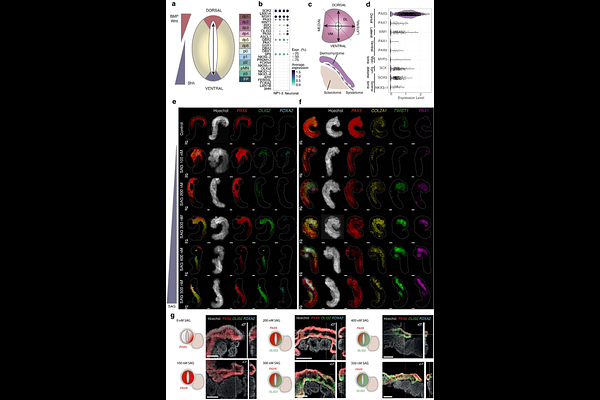Modelling co-development between somites and neural tube with human Trunk-like Structures (hTLS)

Modelling co-development between somites and neural tube with human Trunk-like Structures (hTLS)
Makwana, K.; Tilley, L.; Chakravarty, P.; Thompson, J.; Baillie-Benson, P.; Rodriguez-Polo, I.; Moris, N.
AbstractHuman stem cell-based embryo models have opened new avenues of research in development by providing experimentally amenable in vitro systems. One of the features of embryo models is their multilineage differentiation, which allows the co-development of, and interactions between, tissues. Here, we utilise a human Trunk-like Structure (hTLS) model to explore trunk development. We show that hTLS have morphologically organised somites and a neural tube that form through self-organised, endogenous signalling including anteroposterior FGF, Wnt and Retinoic Acid (RA) gradients that modulate the fate of neuromesodermal progenitors. Comparison to an existing dataset from organogenesis-stage human embryos shows that hTLS cells approximate Carnegie Stage 13-14 (28-35 days post-fertilisation). The absence of a notochord leads to a dorsal identity, but exogenous exposure to smoothened agonist (promoting Sonic Hedgehog signalling) progressively ventralises both somites and neural tube in a dose-dependent manner. Furthermore, we identify endogenous signalling from the neural tube to the somites, which leads to medially localised ALDH1A2, and subsequent RA signalling from the somites to the neural tube, which leads to spontaneous neural progenitor patterning and PAX6 expression. Together, our data highlight the value of modularity in embryo models which we leverage to explore human trunk co-development.